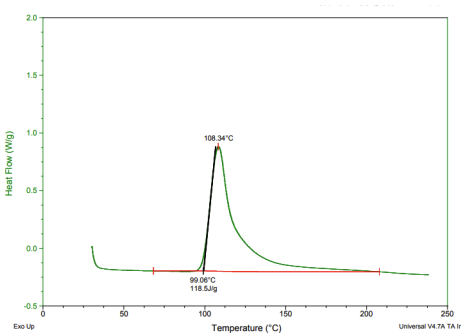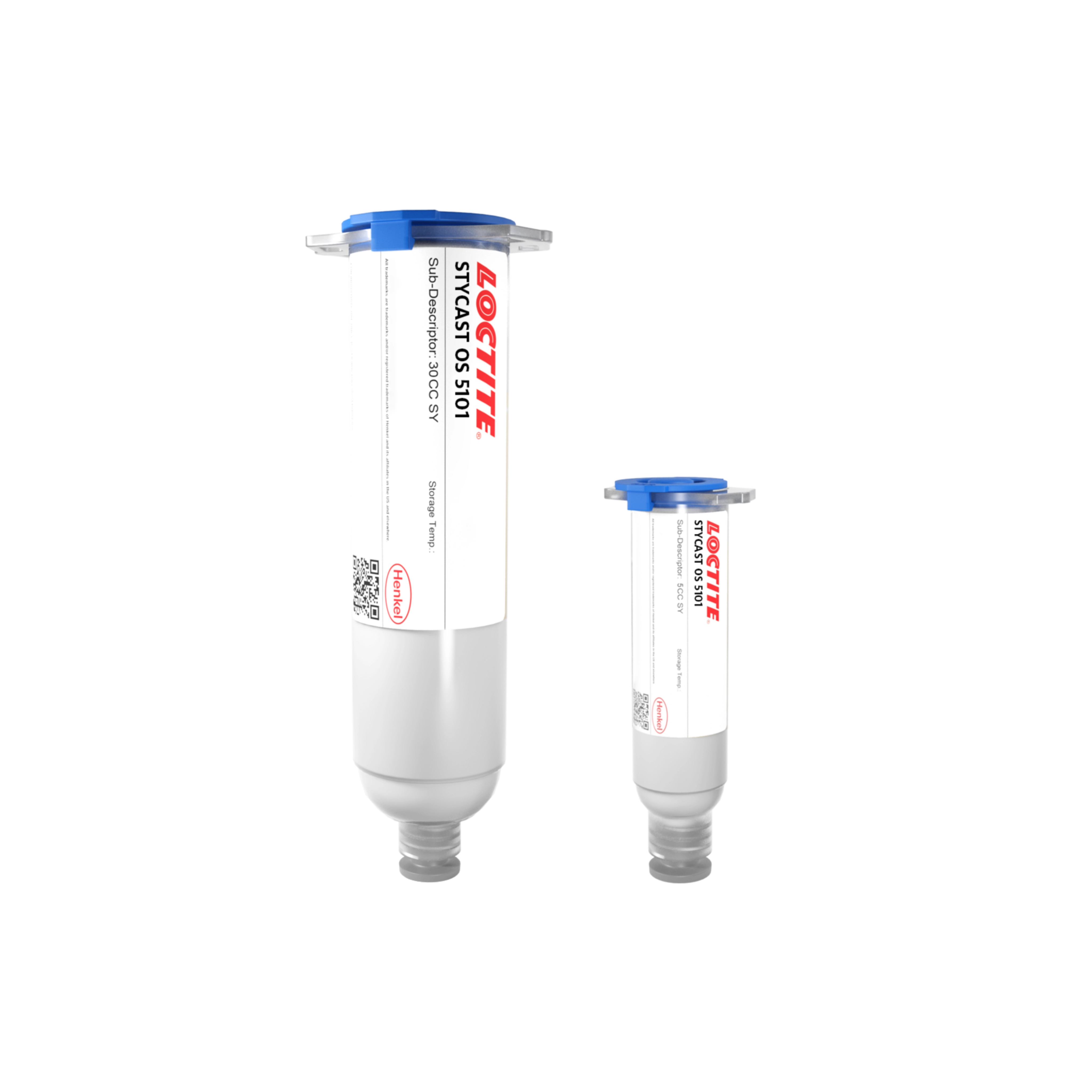LOCTITE STYCAST OS5101
- UV Cure
- Optoelectronics assembly
- Low CTE and moisture absorption
Product Description
LOCTITE STYCAST OS 5101 is specially formulated for use in optical component assembly applications. This product is designed with a secondary thermal cure mechanism for applications with shadowed areas where light is unable to penetrate.
LOCTITE STYCAST OS 5101 is a dual cure, active alignment adhesive designed for the demands of 100 GbE and 400 GbE optical transceivers and ROADM switches used in cloud- and hyperscale datacenters. The material ensures accurate lens, component and fiber alignment, which is critical to signal integrity for high-speed data transmission. It can be used for TO-CAN pre-fix, lens, fiber, glass, and other optical components requiring active alignment or pre-fixing.
LOCTITE STYCAST OS 5101 combines UV and thermal cure mechanisms to precisely align and bond optical lenses, components and fibers so that light transmittance is maximized and positional integrity is maintained while in operation. With excellent dimensional stability, low shrinkage and strong adhesion to multiple surfaces, LOCTITE STYCAST OS 5101 delivers reliable performance for next-generation optical devices.
LOCTITE STYCAST OS 5101 is based on a robust epoxy resin system and shows ~0.2% weight loss by cure shrinkage and ~0.6% weight loss after UV/120C cure by TGA. This is comparable level to NASA Outgassing approved encapsulants with typically <1% Total Mass Loss (TML).
Cure Schedule
- Light Source LED lamp
- Wavelength, nm 365
- Light Intensity, mW/cm² 120 to 250
- Exposure Time, seconds 60 to 120
- Secondary thermal cure: 60 to 120 minutes @ 120°C
- Onset temperature is 99°C and the lowest curing profile is 90-120 minutes @ 100°C (We suggest longer 120min for an optimum cure)
Technical Specifications
| General Properties | |||||||
| |||||||
| Physical Properties | |||||||
| Thixotropic index Thixotropic index Thixotropic Index is a ratio of a material s viscosity at two different speeds in Ambient temperature, generally different by a factor of ten. A thixotropic material s viscosity will decrease as agitation or pressure is increased. It indicates the capability of a material to hold its shape. Mayonnaise is a great example of this. It holds its shape very well, but when a shear stress is applied, the material easily spreads. It helps in choosing a material in accordance to the application, dispense method and viscosity of a material. | 1.5 | ||||||
| Viscosity Viscosity Viscosity is a measurement of a fluid’s resistance to flow. Viscosity is commonly measured in centiPoise (cP). One cP is defined as the viscosity of water and all other viscosities are derived from this base. MPa is another common unit with a 1:1 conversion to cP. A product like honey would have a much higher viscosity -around 10,000 cPs- compared to water. As a result, honey would flow much slower out of a tipped glass than water would. The viscosity of a material can be decreased with an increase in temperature in order to better suit an application | 22,000 mPa.s | ||||||
| Thermal Properties | |||||||
| |||||||
| Glass Transition Temperature (Tg) Glass Transition Temperature (Tg) The glass transition temperature for organic adhesives is a temperature region where the polymers change from glassy and brittle to soft and rubbery. Increasing the temperature further continues the softening process as the viscosity drops too. Temperatures between the glass transition temperature and below the decomposition point of the adhesive are the best region for bonding. The glass-transition temperature Tg of a material characterizes the range of temperatures over which this glass transition occurs. | 137 °C | ||||||
Additional Information
What is the material's onset temperature
Onset temperature is 99°C and the lowest curing profile is 90-120 minutes @ 100°C (We suggest longer 120min for an optimum cure). Please see the Data package in the Documents section for additional information.

Key Benefits
- Dimensional stability ensures position accuracy and minimal signal loss
- CTE below Tg of 20 PPM/°C
- Volume shrinkage less than 1.0 %
- Low moisture absorption ( 0.8%)
- High UPH with energy savings
- UV cure in 40 sec. at 1W
- Supply chain simplicity; complements full line of structural and die attach adhesives for fiber optic device assembly
- One-component material with good dispensability
- Strong adhesion to multiple surfaces including stainless steel, glass, gold and nickel
- Multi-purpose; ideal for many optical applications including PEI lens active alignment and bonding, OSA to TO-CAN pre-fix, silicon photonics assembly and passive component assembly such as collimator lens bonding



